Gold has performed an enormously valuable role as a store of value for thousands of years, throughout most of the world’s civilisations. Unlike currencies, which can wax and wane dramatically in value – and collapse altogether – gold’s value remains intrinsic and remarkably consistent over time. Hence, it has provided an enduring role as an insurance policy in investors’ portfolios.
Gold has however had its relevance questioned over the past half-century, commencing with US President Richard Nixon’s move in 1971 away from the previous Bretton Woods system of having the US currency backed by gold. Nixon implemented a regime based on a freely-floating fiat currency that remains in place today. As financial systems have evolved over recent decades, gold has increasingly been perceived as somewhat of an ancient relic – not only by investors but also by governments.
If we cast our minds back to 1997 some of us will recall the actions of the Australian government via the RBA, which sold two-thirds of Australia’s gold reserves at prices around $300/oz or lower – in the midst of the Asian economic crisis. The official version of events went that since gold was no longer important to the international monetary system, the central bank no longer needed to hold it as an asset against its liabilities. What a mistake that was.
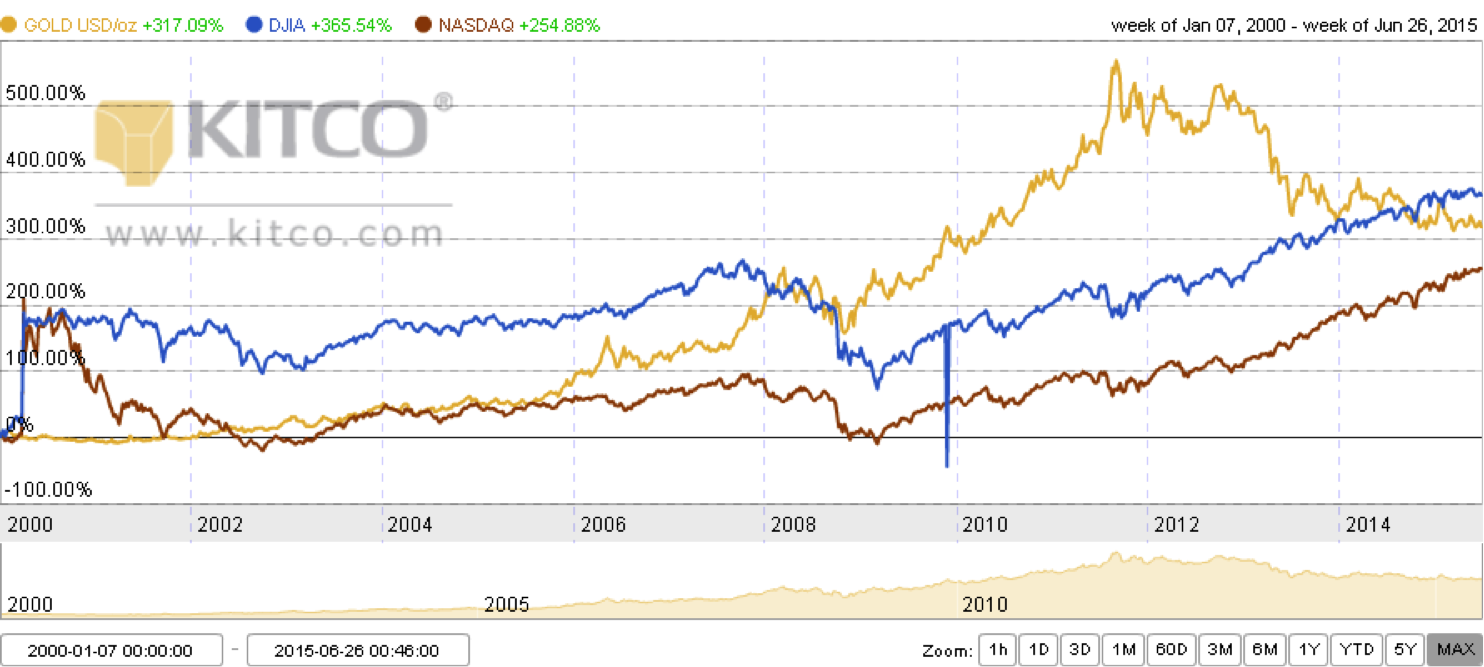
I love the chart above because it demonstrates that despite perceptions of gold being an arcane relic, it has performed exceptionally well over the last 15-year period, particularly against the high-flying Dow Jones and NASDAQ Indices.
Even today gold continues to defy the skeptics, demonstrating robust price support as we’ve previously predicted around the $1,200/oz mark. A host of positive factors are driving gold’s resilience – and most of them aren’t new.
Perhaps the best illustration of gold’s investment appeal is the strong level of demand emanating out of both China and India, to the point where virtually all of the gold that’s been mined and produced over the past two years has been consumed by these two countries alone. This is truly an amazing statistic that reinforces the unabated flow of gold from West to East.
It isn’t however Asia that’s the primary driving force behind the gold price at the present time. Right now gold is primarily dominated by sentiment with respect to the US economy, particularly the actions of the US Federal Reserve. The ‘Will they, won’t they’ nature of the conjecture surrounding the Fed’s deliberations has cast a pall over not just the US economy, but the broader world economy.
Over the past few years the Fed has tried to talk tough with respect to interest rates, admitting it recognises the dangers of keeping rates too low for too long. At the same time however it points to economic growth in the US as clear evidence that its ‘easy money’ policies are working. The enduring problem however is that whilst the Fed is prepared to talk the talk, it isn’t prepared to follow through, with interest rate rises in a perpetual state of deferral.
In my view the situation reinforces the underlying fragility of the US economic recovery – something the Fed won’t directly concede in any meaningful way for fear of spooking markets. The Fed’s easy money policies have distorted market prices and encouraged destabilizing financial speculation – as well as unfairly punishing savers.
Even more importantly, the US economy and financial markets have become so heavily dependent on artificially-suppressed interest rates that it is extremely difficult for the Fed to wean markets off them, without major repercussions. The danger is that the situation won’t be reversed in time, as the Fed has a well-established tendency of not recognizing the consequences of loose monetary policy until it’s too late.
So how will gold perform in a rising interest rate environment, given that there are many who firmly believe that a rising US interest rate environment would be bad for gold? In fact the opposite is true. The important factor here is that the ultimate and real driver of the price of gold is a negative real interest rate environment – which is defined by nominal interest rates minus inflation.
In the real world, central bank policies of inducing negative real rates in order to ‘incentivize’ borrowing have directly expanded the money supply and simultaneously devalued currencies. Debt is inherently inflationary if you have the ability to print your own currency. This has been commonplace since the GFC, with virtually all major currencies declining substantially in value.
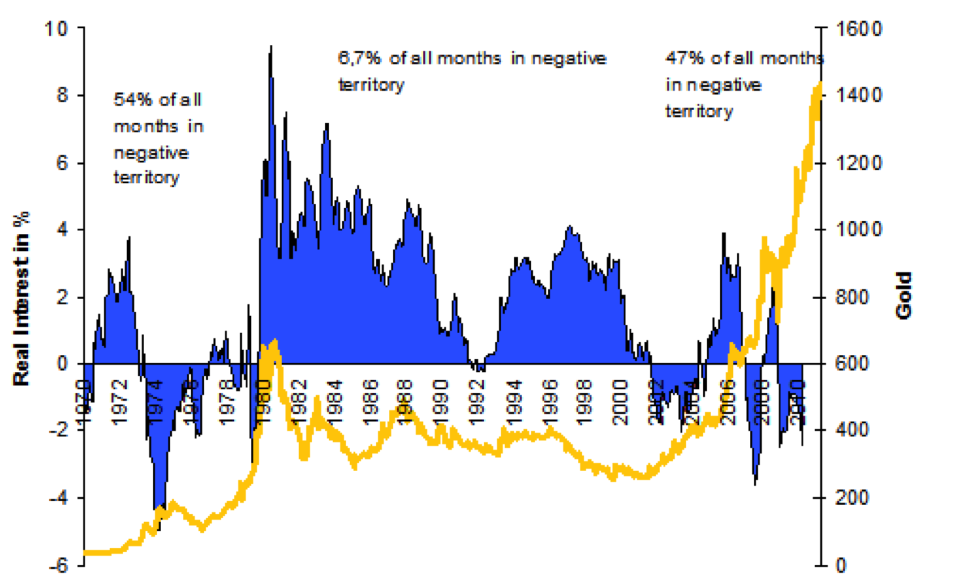
If we refer back to the 1970s – a period of significant corresponding interest rate and gold price increases – the gold bull market of the 1970s was dominated by inflation. Interest rates rose steadily to keep up with it, but real interest rates were mostly negative for the entire period.
The key is that the latest US economic data does not support an interest rates rise, with the US Federal Reserve admitting as much. This in turn has led to markets lengthening the timeframe of any interest rate move – something we have been skeptical about anyhow for some time now. Ultimately, the Fed will likely have to raise interest rates, but we anticipate no negative impact on the price of gold.
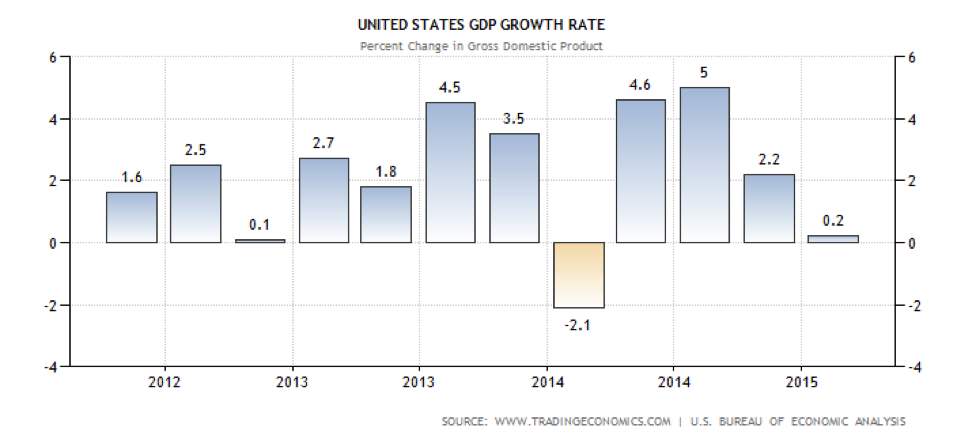
If we turn our attention to the demand side, the latest GFMS data shows China maintaining its No. 1 position in terms of gold purchases for 2014. Significantly, GFMS notes that Chinese imports of gold and deliveries from the Shanghai Gold Exchange (SGE) considerably exceeded the quoted consumption figure.
Altogether the global Top 20 gold nations account for almost 85% of total global gold consumption, with 13 of them classified as being in Asia and the Middle East – with China and India between them accounting for 47.3% of GFMS-calculated global consumption.
What’s also interesting is GFMS data with respect to the Top 20 gold consuming nations on a per-capita consumption basis. India is only in 19th place, whilst mainland China isn’t even in the Top 20. The natural conclusion is that there is the strong potential for a huge percentage increase in gold consumption in both these nations, as per-capita wealth grows.
Official sector gold purchases during across the world amounted to 466 tonnes net, which was up 14% from 2013 – and the second highest level since the end of the gold standard. The Russian central bank was the biggest gold purchaser during 2014 with 173 tonnes, while several CIS countries also increased their gold holdings.
Something else worth contemplating from a gold demand perspective is the accelerated efforts by the Chinese to ensure that their currency, the yuan, is a viable competitor to the US dollar. Speculation has grown that the Chinese government has stockpiled gold as part of a plan to diversify its $3.7 trillion in foreign-exchange reserves. The natural concern for China is that most of its reserves are held in US dollars.
Bloomberg Intelligence suggests that The People’s Bank of China could have as much as tripled its holdings of gold bullion since it last updated them during April 2009, to 3,510 metric tons – second only to the US on 8,133.5 tons.
Ashish Bhatia, the World Gold Council’s director, central banks and public policy, in New York. Recently commented that it’s ideal for central banks to hold between 4% and 10% of their assets in gold – which compares with China at 1% – based on published figures. If China continues to increase its gold purchases, this will be hugely supportive for the gold price.
In my view one of the most concerning aspects (or encouraging, depending on your point of view) of the world gold scene at present is that of gold supply. If we take a quick look at the reserves position of the world’s Top 5 gold producers (Barrick, AngloGold, Newmont, Goldcorp and Kinross) there is a glaring problem – gold reserves are on the slide for all the top miners.
The latest data underlines what is a deteriorating trend – on average proven and probable gold reserves slipped by 12% from 2013 to 2014 among the top five gold miners. The reserve declines ranged between 9% and 20%, representing between 5 million and 11 million ounces gold.
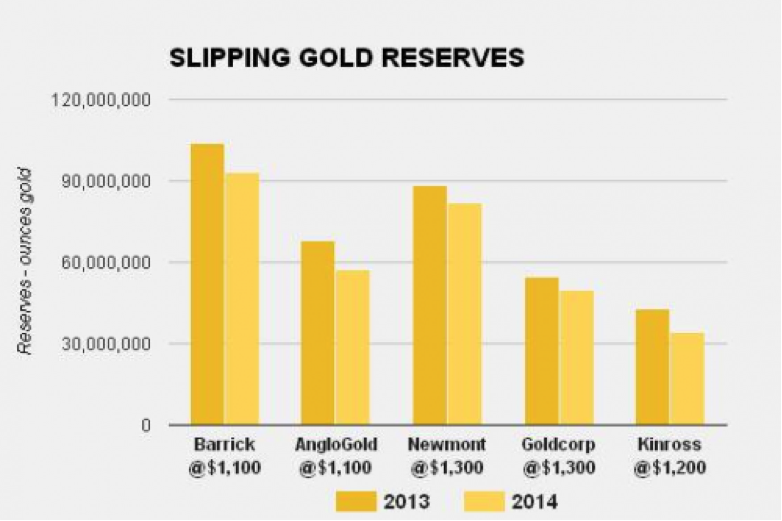
Significantly too, all top five gold miners used the same gold price assumptions in 2013 and 2014 in calculating their own reserves, which means that reserve declines reflected asset sales and depletion more than they have in recent years (when variations in the underlying gold price had more of an impact).
As gold producers have reduced corporate risk (by way of reduced asset purchases, corporate deals, takeovers etc) and eliminated exploration risk (by way of massive cuts to exploration programs), new discoveries have fallen – and so too has the capacity for gold producers to boost (or even maintain) gold reserves. This has been exacerbated by an industry focused on cost control, after criticism for years of maintaining operations with marginal or sub-par returns.
What about the Australian gold scene? For domestic producers, US$ gold price stability around US$1,200 has been a godsend – as the corresponding easing in the value of the A$ has coincided with a drastic fall in the price of crude oil since late 2014, along with dramatic falls in general operating and capital costs – helping to boost operating margins for local producers.
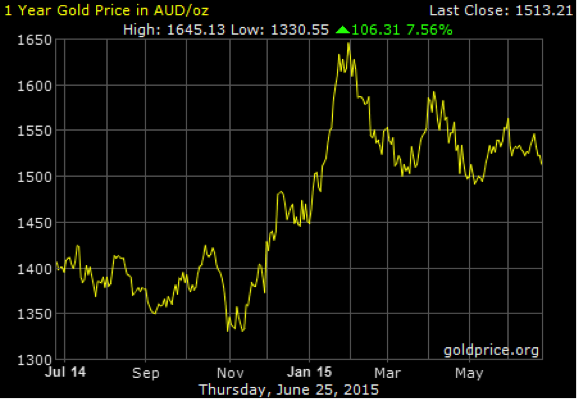
At the same time we’ve seen many international gold heavyweights looking to exit large, non-core domestic gold projects as they retreat to their North American or Southern African bases to lick their wounds. This has presented once-in-a-lifetime corporate acquisition opportunity for cashed-up domestic gold companies, keen to expand their production profiles.
Companies like Northern Star (ASX: NST), Evolution Mining (ASX: EVN) and Metals X (ASX: MLX) are amongst the key gold sector players involved in strategic takeover activity over recent months, along with hugely successful advanced exploration play Gold Road Resources (ASX: GOR. All have been top sharemarket performers, generating returns of between 40% and 75% over the past 12 months.
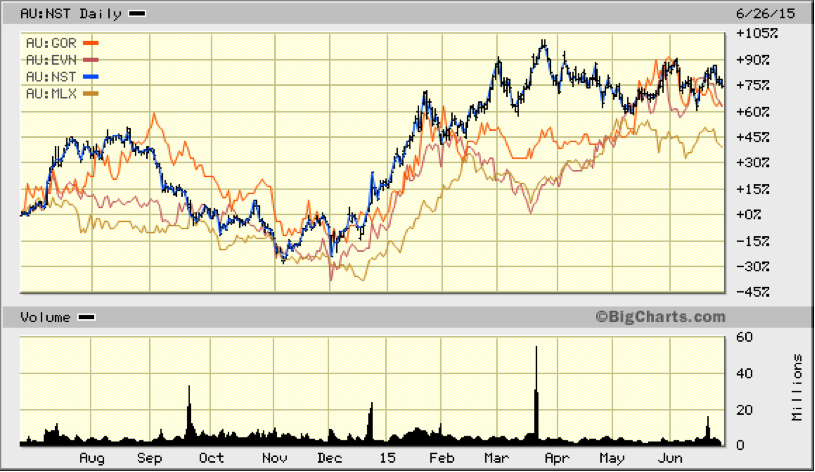
Summary
The gold sector continues to see strong Asian gold demand, with an ongoing transfer of gold from West to East. China is keen to see its yuan as a de factor world currency, which means a gold-backed currency. At the same time China is also keen to diversify its foreign reserves away from the current US$ focus. In the US, a rise in interest rates won’t (despite popular rhetoric) be negative for gold. Simultaneously, we will see supply-side headwinds in terms of declining reserves for the world’s top producers, which further underwrites my confidence in gold’s near and longer-term prospects.
I maintain my $1,200 gold support level for 2015/16, with the potential for prices to edge higher towards $1,300 over the next couple of years. With the A$ expected to remain subdued compared to the US$, A$ gold prices will remain robust and operating costs will remain in check, providing robust operating margins for domestic gold producers – reinforcing the potential for above-average returns for investors.






